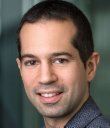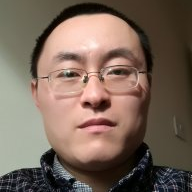




|
Eight Key Ideas in Computer Architecture from Eight Decades of Innovation |
AI Deep Learning in Image Processing Research |
 |
 |
|
University of California, Santa Barbara, United States
Duration: 9:00 Am to 10:30 Am Date: 2022-11-17 Session Place: Neshan- https://vroom.um.ac.ir/Neshan
|
New Jersey Institute of Technology, Newark, United States Duration: 16:00 Pm to 17:00 Pm Date: 2022-11-17 Session Place: Neshan- https://vroom.um.ac.ir/Neshan
|
|
Autonomous Vision-based Drones |
Knowledge engineering for COVID-19 recognition |
 |
 |
|
University of Zurich, Zurich, Swiss
Duration: 11:00 Am to 12:00 Pm Date: 2022-11-18 Session Place: Neshan- https://vroom.um.ac.ir/Neshan
|
University of Leicester, Leicester, United Kingdom
Duration: 16:00 Pm to 17:00 Pm Date: 2022-11-18 Session Place: Neshan- https://vroom.um.ac.ir/Neshan |
Knowledge engineering for COVID-19 recognition
Biography:
Prof. Yudong Zhang (Senior Member, IEEE) received the BE degree in information sciences the MPhil degree in communication and information engineeringfrom the Nanjing University of Aeronautics and Astronautics, in 2004 and 2007, respectively, and the PhD degree in signal and information processing from Southeast University, in 2010. He was a postdoc from 2010 to 2012 with Columbia University, and as an assistant research scientist from 2012 to 2013 with Research Foundation of Mental Hygiene. He was a full professor from 2013 to 2017 with Nanjing Normal University. He is currently a professor with the School of Informatics, University of Leicester, U.K. His research interests include deep learning and medical image analysis. His research interests include artificial intelligence in medical image analysis. He is a fellow of the IET (FIET), and senior member of the IEEE, IES, and ACM. He was included in the “Most Cited Chinese researchers (Computer Science)” by Elsevier from 2014 to 2018. He was the recipient of the Web of Science Highly Cited Researcher 2019, “Emerald Citation of Excellence 2017, and MDPI Top 10 Most Cited Papers 2015. He was included in Top Scientist in Guide2Research.
Abstract:
COVID-19 is a pandemic disease that already caused more than 6.22 million deaths until 26/April/2022. A CT scan is a medical imaging technique used in radiology to get detailed images of the body noninvasively for diagnostic purposes. This talk will discuss the recent advances of knowledge engineering-based methods in chest CT-based COVID-19 diagnosis. Two other chest-related diseases: secondary pulmonary tuberculosis and community-acquired pneumonia, will be covered in this talk.
Homepage: www2.le.ac.uk/departments/informatics/people/yudong-zhang
University of Leicester, Leicester, United Kingdom
---------------------------------------------------------------------------------------------------------------------------------------------------------------------------------------------------
Autonomous Vision-based Drones

Biography:
Davide Scaramuzza is a Professor of Robotics and Perception at the University of Zurich, where he does research at the intersection of robotics, computer vision, and machine learning, aiming to enable autonomous, agile navigation of micro drones using both standard and neuromorphic event-based cameras. He pioneered autonomous, vision-based navigation of drones, which inspired the NASA Mars helicopter. He has often served as a consultant for the United Nations, including the International Atomic Energy Agency's Fukushima Action Plan on Nuclear Safety. For his research contributions, he won prestigious awards, such as a European Research Council (ERC) Consolidator Grant, the IEEE Robotics and Automation Society Early Career Award, an SNF-ERC Starting Grant, a Google Research Award, a Facebook Distinguished Faculty Research Award, and several paper awards. In 2015, he co-founded Zurich-Eye, today Facebook Zurich, which developed the world-leading virtual-reality headset, Oculus Quest, which sold in over 10 million units. Many aspects of his research have been prominently featured in wider media, such as The New York Times, The Economist, Forbes, BBC News, Discovery Channel.
Abstract:
Autonomous quadrotors will soon play a major role in search-and-rescue, delivery, and inspection missions, where a fast response is crucial. However, their speed and maneuverability are still far from those of birds and human pilots. Agile flight is particularly important: since drone battery life is usually limited to 20-30 minutes, drones need to fly faster to cover longer distances. However, to do so, they need faster sensors and algorithms. Human pilots take years to learn the skills to navigate drones. What does it take to make drones navigate as good or even better than human pilots? Autonomous, agile navigation through unknown, GPS-denied environments poses several challenges for robotics research in terms of perception, planning, learning, and control. In this talk, I will show how the combination of both model-based and machine learning methods united with the power of new, low-latency sensors, such as event cameras, can allow drones to achieve unprecedented speed and robustness by relying solely on onboard computing.
Homepage: https://rpg.ifi.uzh.ch/people_scaramuzza.html
University of Zurich, Zurich, Swiss
---------------------------------------------------------------------------------------------------------------------------------------------------------------------------------------------------
Eight Key Ideas in Computer Architecture from Eight Decades of Innovation

Biography:
Behrooz Parhami (PhD in computer science from University of California, Los Angeles, 1973) is Professor of Electrical and Computer Engineering, and former Associate Dean for Academic Personnel, College of Engineering, at University of California, Santa Barbara. He has research interests in computer arithmetic, parallel processing, and dependable computing. In his previous position with Sharif (formerly Arya-Mehr) University of Technology in Tehran, Iran (1974-1988), he was also involved in educational planning, curriculum development, standardization efforts, technology transfer, and various editorial responsibilities, including a five-year term as Editor of Computer Report, a Persian-language computing periodical. His technical publications include over 300 papers in peer-reviewed journals and international conferences, a Persian-language textbook, and an English/Persian glossary of computing terms. Among his publications are three textbooks on parallel processing (Plenum, 1999), computer arithmetic (Oxford, 2000; 2nd ed. 2010), and computer architecture (Oxford, 2005). Professor Parhami is a Life Fellow of IEEE, a Fellow of IET, a Chartered Fellow of the British Computer Society, a member of the Association for Computing Machinery and American Society for Engineering Education, and a Distinguished Member of the Informatics Society of Iran for which he served as a founding member and President during 1979-84. Professor Parhami has served on the editorial boards of IEEE Trans. Sustainable Computing (since 2016), IEEE Trans. Computers (2009-2014; 2016-now), IEEE Trans. Parallel and Distributed Systems (2006-2010), and International J. Parallel, Emergent and Distributed Systems (2006-2012). He also chaired IEEE’s Iran Section (1977-1986), received the IEEE Centennial Medal in 1984, and was honored with a most-cited paper award from J. Parallel & Distributed Computing in 2010. His consulting activities cover the design of high-performance digital systems and associated intellectual property issues.
Abstract:
Computer architecture became an established discipline when the stored-program concept was incorporated into bare-bones computers of the 1940s. Since then, the field has seen multiple minor and major innovations in each decade. I will present my pick of the most important innovation in each of the eight decades, from the 1940s to the 2010s, and show how these ideas, when connected to each other and allowed to interact and cross-fertilize, produced the phenomenal growth of computer performance, now approaching exa-op/s (billion billion operations per second) level, as well as to ultra-low-energy and single-chip systems. I will also offer predictions for what to expect in the 2020s and beyond.
Homepage: https://www.computer.org/profiles/behrooz-parhami
University of California, Santa Barbara, United States
---------------------------------------------------------------------------------------------------------------------------------------------------------------------------------------------------
AI Deep Learning in Image Processing Research

Biography:
Frank Shih's research interests focus on Machine Learing, Artificial Intelligence, Image Processing, Computer Vision, Digital Watermarking and Steganography, Forensics and Security, Computer Graphics, Robot Sensing, Medical Imaging, Fuzzy Logic, Pattern Recognition, Neural Networks, Parallel Processing.
Abstract:
Artificial Intelligence (AI) intends to make machines to learn from experiences, adjust to input data and perform human-like tasks. The term artificial intelligence was coined in 1956 but has become more popular today thanks to increased data volumes, advanced algorithms, and improvements in computing power and storage. Deep learning has recently emerged to be applied to a variety of industries, ranging from healthcare to manufacturing to automotive, among others. As an enabling tool for automating and accelerating the analysis of large data sets generated by various sensors and other connected devices, deep learning algorithms will find a home in a multitude of business and research applications. In this talk, I will cover these technologies to be used for accomplishing specific tasks by processing large amounts of data and ecognizing patterns in the data. The research fields of AI, including medical image diagnosis, object segmentation and recognition, and morphological neural networks, will be introduced and its practical applications will be presented.
Homepage: https://web.njit.edu/~shih/
New Jersey Institute of Technology, Newark, United States
Hard Deadline Paper Submission
2022-07-31Notification of Acceptance
2022-09-01Camera-Ready Deadline
2022-09-10Early Bird Registration
2022-09-25Registration Deadline
2022-10-25Conference Date (Start)
2022-11-17Conference Date (End)
2022-11-18